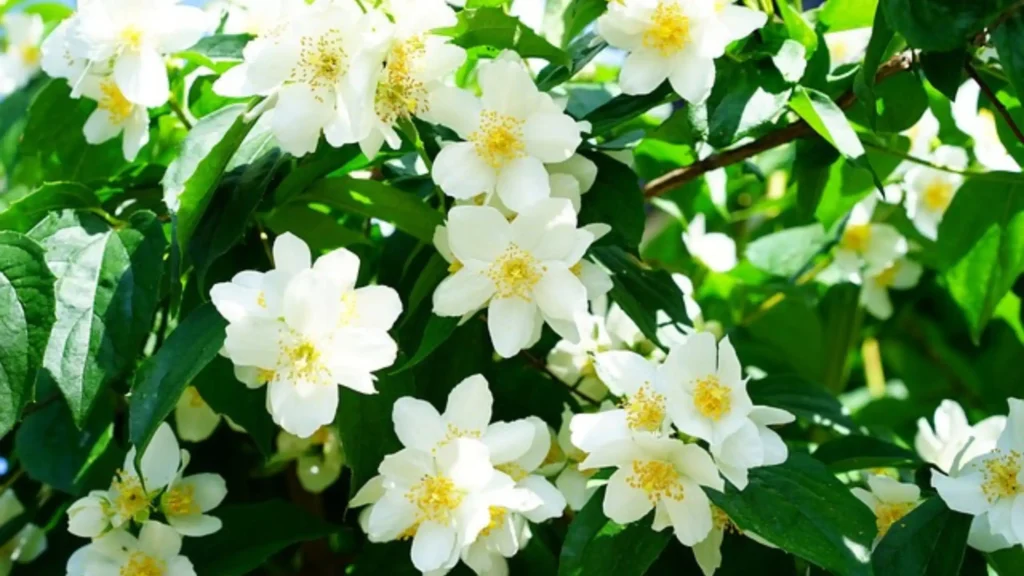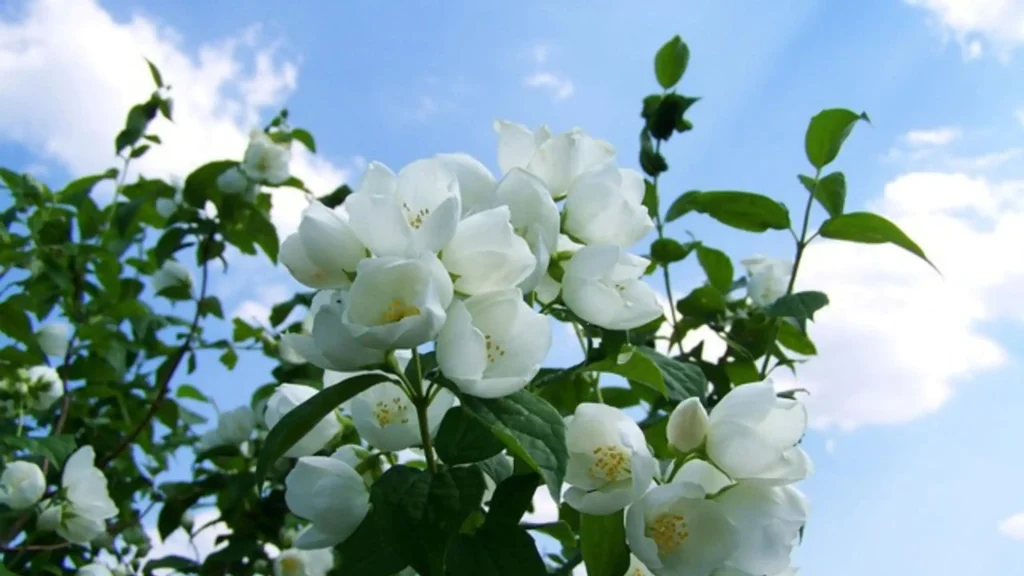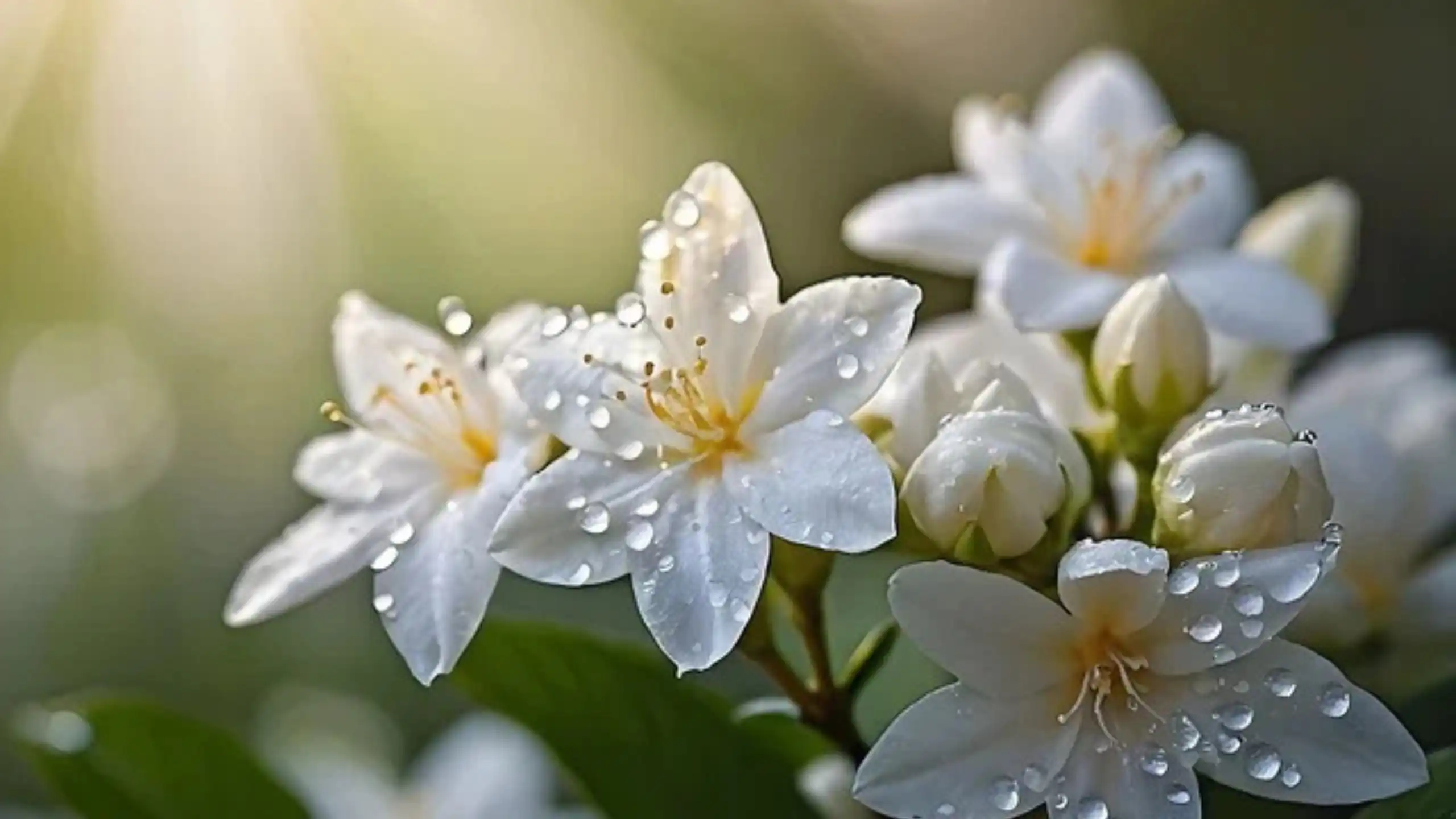The jasmine flower is admired worldwide for its delicate appearance and captivating fragrance. Known for its soft white or yellow blossoms, jasmine represents purity, love, and beauty in many cultures. Its sweet scent is often associated with relaxation and romance, making it a popular choice in perfumes, teas, and essential oils. Let’s explore the various aspects of jasmine, including its symbolism, popular types, growing conditions, and care tips.
The symbolism of Jasmine Flowers
Jasmine holds symbolic meanings across different cultures and traditions:
Love and Romance: Jasmine is often associated with love and attraction, and is even woven into bridal garlands and decorations in some cultures.
Purity and Spirituality: Its pristine white blooms symbolize purity and are often used in religious ceremonies.
Healing and Positivity: In aromatherapy, jasmine’s soothing scent is said to have calming effects, promoting relaxation, reducing stress, and encouraging a sense of peace. Blog
Popular Types of Jasmine
There are over 200 species of jasmine, but a few varieties are particularly popular due to their fragrance, appearance, or ease of growth.
Common Jasmine (Jasminum officinale)
Appearance: White flowers with a sweet fragrance.
Blooming Season: Summer through fall.
Uses: Widely grown for ornamental purposes and often used in perfumes.
Arabian Jasmine (Jasminum sambac)
Appearance: White, clustered blooms that are smaller and rounder.
Blooming Season: Year-round in warm climates.
Uses: Used in making jasmine tea and leis; it’s also the national flower of the Philippines.
Spanish Jasmine (Jasminum grandiflorum)
Appearance: White to pinkish blooms with a strong scent.
Blooming Season: Late spring through early fall.
Uses: Commonly used in perfumes due to its intense fragrance.
Winter Jasmine (Jasminum nudiflorum)
Appearance: Bright yellow blooms that appear in winter.
Blooming Season: Winter to early spring.
Uses: Grown as a decorative plant to add color during colder months.
Growing and Caring for Jasmine
Jasmine plants can thrive both outdoors and indoors, depending on the species. Here are some general guidelines to help you grow healthy jasmine plants. Business Services
Light Requirements
Outdoor Jasmine: Prefers full sun to partial shade, though some varieties can tolerate shade.
Indoor Jasmine: Place in a bright, sunny spot where it gets plenty of indirect sunlight.
Soil
Jasmine prefers well-drained, fertile soil that’s rich in organic matter. Adding compost or well-rotted manure can improve soil quality and support healthy growth. Fashion
Watering
During Growth: Jasmine requires consistent moisture during its active growth periods, especially in the spring and summer. Water when the top inch of soil feels dry.
Dormant Period: Reduce watering in winter or when the plant is not actively growing, as overwatering can lead to root rot. News
Temperature and Humidity
Most jasmine varieties thrive in warm temperatures and moderate to high humidity. Indoor jasmine can benefit from occasional misting to increase humidity or placing a humidity tray beneath the pot. General
Fertilizer
Use a balanced, water-soluble fertilizer every 4-6 weeks during the growing season. Avoid fertilizing during dormancy, as this can cause weak growth.
Pruning
Pruning jasmine after flowering encourages new growth and helps keep the plant neat. Trim back long stems and remove any dead or yellowing leaves to maintain their shape. Health & Fitness
Common Uses of Jasmine Flowers
Jasmine’s beauty and fragrance make it a versatile plant used in many areas of daily life:
Perfumes and Essential Oils: Jasmine essential oil is prized for its sweet, floral aroma and is a common ingredient in high-end perfumes.
Teas: Jasmine tea, often a blend of green or white tea scented with jasmine blossoms, is popular for its calming aroma and subtle flavor.
Cultural and Religious Uses: Jasmine flowers are often used in ceremonies and rituals, symbolizing love and spirituality.
Medicinal Uses: In traditional medicine, jasmine is sometimes used for its supposed calming effects, helping with anxiety and sleep.
Interesting Facts About Jasmine
National Flower: Jasmine is the national flower of several countries, including the Philippines and Indonesia, symbolizing beauty and grace.
Night Bloomers: Some varieties, such as night-blooming jasmine, release their fragrance more strongly at night.
Jasmine flowers are much more than just a fragrant plant; they carry deep meanings and versatile uses, making them cherished worldwide. Whether growing jasmine in your garden or using its fragrance at home, it’s a plant that brings beauty, peace, and a touch of elegance to any setting. solar gadget
